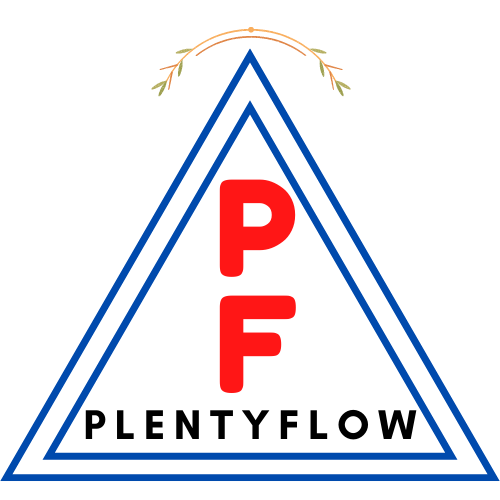
In the beginning there was.......
Steps and best practices learned from successful ebook authors and digital creators.
Identify your target audience: Before you start writing your ebook, it’s important to understand who you are writing for. This will help you tailor your content and marketing efforts to appeal to your target audience.
Choose a profitable niche: Research the ebook market to find a niche that is in demand and has the potential to be profitable.
Write a compelling book: Write a book that is interesting, informative, and provides value to your readers. Make sure to proofread and edit your work to ensure that it is error-free.
Create a professional cover design: Your book cover is the first thing that potential readers will see, so make sure it is eye-catching and professional. You can hire a graphic designer or use an ebook cover creator tool to design your cover.
Format and convert your ebook: Make sure your ebook is formatted properly and can be easily read on different devices. You can use a tool like Kindle Direct Publishing to convert your ebook into the appropriate format.
Optimize for search engines: Make sure to include relevant keywords in your book title and description to help it rank well in search engines.
Utilize social media and email marketing: Use social media platforms like Facebook, Instagram, and Twitter to promote your ebook and build a following. Email marketing is also a great way to connect with your audience and promote your ebook.
Price it competitively: Research the prices of similar ebooks in your niche and price your ebook competitively.
Use bonuses and upsells: Offering bonuses and upsells can increase the perceived value of your ebook and help boost sales.
Continuously analyze and improve: Keep track of your ebook’s performance and make changes as needed. This could include updating the content, revising the marketing strategy, and more.
Embrace the platform: Utilize the resources that the platform you’re selling your ebook on provides. For example, Amazon has a large number of tools and services that they offer to indie authors, such as Kindle Direct Publishing (KDP) Select, which can help increase visibility and sales.
Build a community: Building a community around your ebook can help generate word-of-mouth marketing, which can be one of the most effective ways to promote your ebook.
Leverage Influencer Marketing: Reach out to people who have a following in your niche and ask them to review or promote your ebook.
Following these steps and best practices can help increase your chances of success as an ebook author and digital creator.
Chapter 1: Who's Gonna Read My Book
It all starts from here.......
Unlocking Your Readership: Mastering the Art of Target Audience Identification
Identifying your target audience is the first and most important step in creating an ebook that will resonate with your readers. Here are some further details on how to identify your target audience:
Research your niche: Start by researching your niche to get a better understanding of the audience you are targeting. This could include reading blogs and forums, joining social media groups, and analyzing your competitors.
Develop buyer personas: Once you have a better understanding of your niche, create buyer personas that represent your ideal readers. This will help you identify their demographics, interests, and pain points, and tailor your content to meet their needs.
Conduct market research: Use market research tools such as surveys, focus groups, and interviews to gather insights on your target audience. This will help you get a better understanding of their needs and preferences.
Analyze your existing audience: If you already have an audience, use analytics tools to gather insights on their demographics, interests, and behaviors. This will help you identify patterns and trends that can inform your content and marketing strategy.
Continuously gather feedback: Finally, gather feedback from your readers and customers to learn more about their needs and preferences. This could include using surveys, polls, or customer reviews to gather insights that can help you improve your ebook and better target your audience.
By identifying your target audience, you can create an ebook that is tailored to their needs and interests, and market it in a way that resonates with them. Use these tips to research your niche, develop buyer personas, conduct market research, analyze your existing audience, and gather feedback. With the right approach, you can create an ebook that speaks directly to your target audience and drives results.
Must Have Tools You're Gonna Need On This Quest. Use These Tools Wisely My Young Apprentice.
There are several online tools that you can use to find, research and identify your target audience. Here are some of the best tools available at the time:
Google Trends: This tool allows you to analyze search data and see how popular certain topics are over time. You can use it to identify keywords and topics that are trending in your niche.
Facebook Audience Insights: This tool allows you to analyze data about Facebook users to better understand your target audience. You can use it to gather information about their demographics, interests, and behaviors.
Quora: Quora is a platform where users can ask and answer questions on various topics. You can use it to research your niche and gain insights on your target audience’s pain points, interests, and preferences.
SEMrush: This tool is primarily used for SEO and PPC research, but it also includes features that can help you identify your target audience. You can use it to research keywords, analyze competitors, and gather insights on your audience’s interests and behavior.
BuzzSumo: This tool allows you to analyze content that is popular in your niche. You can use it to see what types of content your target audience is engaging with, and use this information to create content that resonates with them.
Reddit: Reddit is a platform where users can discuss a variety of topics in subreddits. You can use it to research your niche and gather insights on your target audience’s interests and pain points.
SurveyMonkey: This tool allows you to create and send surveys to your target audience. You can use it to gather feedback on your ebook and learn more about your audience’s needs and preferences.
By using these tools, you can gain a better understanding of your target audience and create an ebook that resonates with them. Each tool has its own unique features and benefits, so it’s a good idea to experiment with a few different ones to find the best fit for your needs.
Chapter 2: So Much To Talk About. Where Do I Start ?
The hardest part of the journey, is beginning the journey itself.
The Art of Niche Selection: Finding a Profitable Topic for Your Ebook
When researching profitable niches for ebooks, it’s important to consider the following factors:
Popularity: Look for niche topics that are currently trending and have a large audience.
Competition: While you want to find a niche that is in demand, you also want to make sure there is not too much competition.
Profit potential: Consider how much money can be made in the niche and if the prices of ebooks in that niche are high enough to make it worth your while.
Passion: Choose a niche you are passionate about, as this will make it easier to write and promote your ebook.
Some examples of profitable ebook niches include:
- Health and wellness
- Personal development
- Business and finance
- Cooking and food
- DIY and home improvement
- Parenting and family
- Self-help and personal growth
- Travel
- Technology and software
- Spirituality and religion
Once you have identified a niche, it’s important to conduct further research to see which sub-niches within that niche are the most profitable and have the least competition.
It’s also worth considering the format of your ebook. Ebooks in the form of guide, checklist, template, toolkit, workbook, or journal are more likely to be successful, as they are practical and can be used as a reference.
Here's Your Set Of Tools For This Leg Of The Journey
There are several online tools that can help you identify popular ebook niches:
Amazon Best Sellers: The Best Sellers page on Amazon is a great resource to find popular ebook niches. You can browse the different categories and subcategories to see what is selling well in your target market.
Google Trends: Google Trends is a free tool that shows you how often a particular search term is being used on Google. You can use it to identify trending topics and popular niches.
Goodreads: Goodreads is a social network for book lovers. You can use it to browse popular genres and see what readers are saying about the books they are reading.
Bookbub: Bookbub is a popular ebook promotion service that sends daily emails to subscribers featuring discounted and free ebooks. You can browse the different categories to see what types of ebooks are being promoted.
K-lytics: K-lytics is a paid service that provides market research for ebooks. They provide reports on different categories and niches, including the number of books published, the average price, and more.
Chapter 3: I'm Gonna Captivate My Readers

You're off to a good start, don't quit. It gets greater later.
Creating a Masterpiece: The Art of Writing a Compelling Ebook
Writing a compelling book that is interesting, informative, and provides value to your readers is crucial for the success of your ebook. Here are some tips to help you achieve this:
Understand your audience: Before you start writing, take the time to understand who your target audience is and what they are looking for in an ebook. This will help you tailor your content and writing style to appeal to them.
Choose a unique angle: Find a unique angle or perspective on the topic that sets your ebook apart from others in the market. This will make it more interesting and appealing to readers.
Provide valuable information: Make sure your ebook is packed with useful information that your readers can apply in their lives. It’s important to provide value to your readers and make the information you’re providing actionable.
Use storytelling techniques: Use storytelling techniques to make your ebook more engaging and interesting. This can include using anecdotes, case studies, and examples to illustrate your points.
Write in a conversational tone: Write in a conversational tone as if you are speaking to your readers directly. This will make your ebook more relatable and easy to read.
Use images and graphics: Use images and graphics to break up text and make your ebook more visually appealing. This can also help make complex information easier to understand.
Edit and proofread your work: It is important to thoroughly edit and proofread your work to ensure that it is error-free and easy to read. This will help build trust with your readers and increase the perceived value of your ebook.
Get feedback: Before publishing your ebook, it’s a good idea to get feedback from beta readers, friends, family, or even paid editing services. They can give you valuable insights on how to improve your book, and also help you to identify errors and inconsistencies.
By following these tips, you can write a compelling ebook that will be interesting and valuable to your readers, and increase the chances of your ebook’s success.
Keep The Rhythm My Apprentice. Here Are Some Tools To Help You Keep Pushing Forward.
There are several online tools available that can assist in writing a compelling book. Here are a few examples:
Grammarly: A popular writing tool that checks your writing for spelling, grammar, and punctuation errors.
Hemingway Editor: An online tool that helps to improve the clarity and readability of your writing.
Scrivener: A powerful writing tool that allows you to organize and write your ebook in one place.
ProWritingAid: An online writing editor that provides suggestions for improving your writing style and structure.
Trello: A project management tool that can help you keep track of your writing goals and progress.
Google Docs: A cloud-based writing and collaboration tool that allows you to work on your ebook from anywhere.
Evernote: A note-taking app that allows you to capture and organize your ideas for your ebook.
These are just a few examples, but there are many other tools available depending on your specific writing needs.
Chapter 4: An Image Says 1000 Words

Let Your Imagination Run Wild
The Art of Cover Design: Making Your eBook Stand Out
Creating a professional cover design for your ebook is essential to make a great first impression on potential readers. The cover of your book is often the first thing that readers will see, so it’s important to make it eye-catching and professional. Here are some tips to help you create a professional cover design:
Understand your audience: Before you start designing your cover, take the time to understand who your target audience is and what they are looking for in an ebook. This will help you tailor your design to appeal to them.
Choose an appropriate image: Use an image that is relevant to your book’s content and will appeal to your target audience. A good cover image should be high-resolution, visually appealing, and relevant to the content of the book.
Use typography effectively: Choose a font that is easy to read and appropriate for your book’s genre. Make sure the title and author name are clearly visible and easy to read.
Use color effectively: Use color to make your cover stand out. Choose colors that are appropriate for your book’s genre and that will appeal to your target audience.
Keep it simple: A simple and clean design will be more effective than a busy and cluttered one. Avoid using too many elements or colors, and make sure the design is easy to understand.
Use an ebook cover creator tool: There are several ebook cover creator tools available online that can help you create a professional-looking cover quickly and easily. These tools usually have a wide range of templates and design elements that you can use to create a cover that is tailored to your book.
Hire a professional graphic designer: If you want a truly professional cover design, it’s worth considering hiring a graphic designer. They have the skills and experience to create a cover that will stand out and appeal to your target audience.
By following these tips, you can create a professional cover design that will make a great first impression on potential readers and increase the chances of your ebook’s success.
Soon You'll Find All The Tools You Need For The Journey
Here are some online tools you can use to create a professional ebook cover design:
- Fiverr: Fiverr is popular online site that connects you with professionals that can help you with tons of creative things, even book covers.
Canva: Canva is a popular online design tool that offers a wide range of templates, graphics, and fonts to help you create a professional ebook cover.
Adobe Spark: Adobe Spark is a design tool that offers a variety of customizable templates to help you create a professional ebook cover.
DIY Book Covers: DIY Book Covers is a simple and affordable platform that offers a user-friendly interface to help you create professional-looking ebook covers.
Snappa: Snappa is an online graphic design tool that offers a variety of customizable templates and graphics to help you create a professional ebook cover.
Book Brush: Book Brush is a design tool specifically for ebook authors, offering a range of customizable templates and graphics to help you create a professional ebook cover.
These tools offer both free and paid plans, so you can choose the one that best suits your needs and budget.
Chapter 5: Prepping For Presentation

Now That You've Written The Best Book Ever. Time To Clean It Up And Get Ready For Battle.
From manuscript to ebook: Everything you need to know about formatting and converting your book.
Formatting and converting your ebook is an important step in ensuring that it can be easily read on different devices. Here are some tips to help you format and convert your ebook:
Choose a file format: The most common file formats for ebooks are ePub and MOBI. ePub is the standard format for most e-readers, while MOBI is the format used by Amazon Kindle. If you plan on publishing your ebook on both platforms, it’s best to convert it to both ePub and MOBI formats.
Use a word processor: Use a word processing program such as Microsoft Word or Google Docs to write and format your ebook. These programs have built-in formatting options that can help you format your ebook to be easily read on different devices.
Use a tool: There are several ebook formatting and conversion tools available online, such as Kindle Direct Publishing, that can help you convert your ebook into the appropriate format. These tools will also check your ebook for any formatting errors and fix them automatically.
Check the format: Preview your ebook on different devices and in different e-reading apps to make sure that it is properly formatted and looks good.
Add meta data: Metadata is information that describes your ebook and it’s important for search engine optimization. The most important metadata fields include, title, author, publisher, and keywords.
Add table of contents: A table of contents is an essential part of an ebook. It helps readers navigate the content and find the information they are looking for quickly.
Add interactive elements: Interactive elements such as hyperlinks, images, and videos, can make your ebook more engaging and interactive.
By following these tips, you can format and convert your ebook properly, making it easy to read on different devices, and increase the chances of your ebook’s success.
You're Becoming One With The Force. These Tools Will Guide You to Becoming The Master Within
Here are some more quality tools online that you can use to format and convert an ebook:
Reedsy – Reedsy offers an online ebook editor that allows you to format and design your ebook easily. It also includes a conversion tool that can help you convert your manuscript to different formats.
Kotobee – Kotobee is an ebook creation software that offers a range of tools, including an editor and a converter. It also includes a library of templates and themes that you can use to design your ebook.
Pressbooks – Pressbooks is a web-based book publishing tool that offers a range of templates and designs to help you create a professional-looking ebook. It also includes an ebook conversion tool that can convert your ebook to different formats.
Draft2Digital – Draft2Digital is a self-publishing platform that offers a free ebook conversion tool that can convert your manuscript to multiple ebook formats.
Smashwords – Smashwords is a self-publishing platform that offers a free ebook conversion tool. It also offers a wide range of distribution channels that can help you reach a larger audience.
Calibre – Calibre is a free and open-source ebook management software that can help you convert your ebook to different formats. It also includes a range of tools that can help you manage your ebook library.
Jutoh – Jutoh is an ebook creation software that offers a range of templates and designs to help you create a professional-looking ebook. It also includes a built-in ebook converter that can convert your manuscript to different formats.
Sigil – Sigil is a free and open-source ebook editor that allows you to create and edit ebooks in EPUB format. It also includes a built-in converter that can convert your ebook to different formats.
Vellum – Vellum is an ebook creation software for Mac that offers a range of templates and designs to help you create a professional-looking ebook. It also includes a built-in ebook converter that can convert your ebook to different formats.
eBookIt – eBookIt is a self-publishing platform that offers a range of services, including ebook formatting and conversion. It also includes a distribution service that can help you reach a wider audience.
- Ebook Maestro – is a software tool that allows you to create professional-looking ebooks and multimedia presentations. It offers a variety of features, including customizable templates, built-in encryption and protection, and support for multiple file formats.
Each of these tools has its own unique features and benefits, so be sure to research them further to determine which one is best for your needs.
Chapter 6: Time To Make Sure My Book Can Be Found Online

You've Come Far My Apprentice. It's Time For The World To See Your Works
SEO for Authors: Optimizing Your Ebook for Higher Search Rankings
Optimizing your ebook for search engines is an important part of ensuring that potential readers can find your book online. Here are some further details on how to optimize your ebook for search engines:
Choose relevant keywords: When creating your ebook title and description, research relevant keywords related to your book’s topic and genre. These keywords should be included in your book’s metadata, which includes the title, subtitle, author name, and book description. Make sure to use relevant keywords without overdoing it, as keyword stuffing can harm your search engine ranking.
Write a clear and concise book description: Your book description should be well-written and provide an accurate and compelling summary of your book’s content. This is the first piece of information that potential readers will see, and it will help them decide whether or not to purchase your book. Make sure to include your keywords in the description while still making it easy to read and understand.
Use metadata to your advantage: Metadata is data that is used to describe your ebook and helps search engines categorize and display your book in search results. When uploading your ebook to online marketplaces, make sure to fill out all of the metadata fields, including the title, subtitle, author name, book description, and any other relevant fields. This will help search engines understand what your book is about and ensure that it appears in relevant search results.
Focus on user experience: While optimizing your ebook for search engines is important, it’s also essential to focus on providing a good user experience. Make sure your book’s content is high-quality, engaging, and provides value to readers. This will help to generate positive reviews and word-of-mouth referrals, which can ultimately improve your search engine ranking.
By including relevant keywords in your ebook title and description and filling out all relevant metadata fields, you can improve your ebook’s search engine ranking and help potential readers find your book online. Additionally, focusing on providing high-quality content and a positive user experience can lead to more positive reviews, which can ultimately lead to even better search engine rankings.
Unlock Your True Potential. These Tools Will Show You The Path
There are several online tools that can help you optimize your ebook for search engines. Here are a few:
KDP Rocket: A tool that helps you find the best keywords to use in your ebook’s title, subtitle, and description to increase your visibility on Amazon.
Kindlepreneur: A website with a free keyword research tool and other resources to help you optimize your ebook for search engines.
Google Keyword Planner: A free tool from Google that helps you find the best keywords to use in your ebook’s title and description for better search engine rankings.
SEMrush: A paid tool that provides detailed keyword research and analysis to help you optimize your ebook for search engines.
Ahrefs: Another paid tool that offers in-depth keyword research and analysis, as well as backlink analysis and other SEO features.
Yoast SEO: A WordPress plugin that helps you optimize your ebook’s content and metadata for better search engine rankings.
Moz Pro: A suite of SEO tools that includes keyword research, backlink analysis, and other features to help you optimize your ebook for search engines.
Ubersuggest: A free tool that provides keyword research and analysis, as well as content ideas and other SEO features.
WordStream: A paid tool that offers keyword research and optimization features, as well as other tools to help you improve your ebook’s search engine rankings.
Serpstat: A paid tool that provides keyword research, competitor analysis, and other SEO features to help you optimize your ebook for search engines.
This blog post contains affiliate links into which we receive a commission upon your decision to purchase a product or subscribe to a service. Thank You.

















